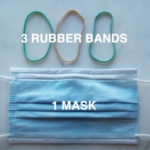 Specially created flies, mice and fish are guiding tailored cancer treatment
Specially created flies, mice and fish are guiding tailored cancer treatment
EVERY person’s cancer is different. While a certain cancer treatment might see off one person’s breast cancer,
it may fail to work on someone else’s, and it can be difficult to know which drugs will be the best for a specific tumour.
Now doctors are starting to test out their options on animals that have been given replicas of an individual’s cancer – known as “cancer avatars”. One method is to generate Drosophila fruit flies with the same genetic mutations as a
person’s cancer. These flies are small and breed fast, so lots of them can be generated in multiple rows of test tubes. Robotic equipment can then screen the effectiveness of hundreds of drug combinations on the flies. This approach was used to guide the treatment of a man with terminal colon cancer. He died after about three years, but this was
probably longer than he would have lived otherwise, says Ross Cagan at the Icahn School of Medicine at Mount Sinai, New York.
The man’s cancer had already spread around his body and developed resistance to several drugs before any fruit fly avatars were made. Genetic sequencing revealed his tumour had at least nine cancerous mutations. The team genetically engineered a strain of flies that had all these mutations in their gut cells – and then bred over 300,000 of them.
A robotic system was used to feed the flies and test different medicines. In this way, the team screened 121 medicines – including cancer drugs and cancer treatment for other conditions – either singly or in combinations of up to three.
Several combinations stopped the flies from dying and slowed the growth of their gut tumours. The doctors eventually went for a cancer drug called trametinib and an osteoporosis one called zoledronate, which had the
best combination of effectiveness and predicted safety. Animal avatars are needed because, although we already have
some cancer medicines designed to combat individual mutations, we can’t predict how a tumour with multiple altered genes will respond, says Cagan. “We don’t yet know the best drug combinations for someone
with nine tumour mutations.” The approach isn’t a cure, though. The man stopped responding to this drug
combination after 11 months. The team sequenced the DNA of tumour cells in his blood and couldn’t identify the
mutations that had made the cancer resistant to the treatment (Science Advances, doi.org/c58s). Mouse avatars are more widely used. These are being developed at several universities, and a US firm, Champions Oncology, already offers this testing service to people with cancer. When a person has a tumour removed, a small piece
is sent to the firm, which then implants cells from it into a small number of mice. A few months later, the results from drug testing in mice are sent back. Flies, however, are particularly amenable to robotic screening
methods, and may be preferable for those concerned about the ethics of animal research. The disadvantage is that they are so different to humans, having an extremely simple immune system, for instance. All the different models have pros and cons, says Rita Fior of the Champalimaud Centre for the Unknown in Lisbon, Portugal, who is developing zebrafish avatars. No large-scale trial has yet shown that any of these approaches leads to people living longer than if their doctors just used their best judgement. “Our goal is to predict in advance what’s the best treatment and get the right drug the first time,” says Fior. “Then we can stop experimenting on patients.” ❚

















